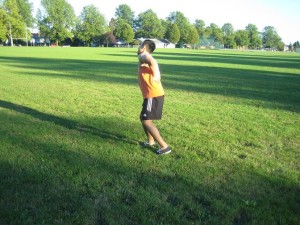Worldwide, it is estimated that more than 200 million people suffer from osteoporosis. Majority of which are postmenopausal women as both testosterone and estrogen, hormones responsible for bone integrity, start to decrease. Projection for this disease shows that there will be a 240% and 310% increase in incidence in women and men, respectively, by 2050.
All normal bones undergo a process called bone remodeling, wherein bone is broken down, otherwise knows as bone resorption, and subsequently repaired or bone formation. As bone mass density starts to develop during childhood, it reaches its peak in the late 20s or early 30s when the rate of bone formation equals that of bone resorption. However, as one continues to age, the rate of bone resorption exceeds the capacity of the body to form new bone. Bone, then, in osteoporosis presents with a thinned out outer cortex, which is normally thick, and an apparent loss of bone trabeculae, the cross bridges inside the cortex. These changes in bone structure reflect the decrease in bone mineral density and the increase in the relative risk of getting a fracture.
The burden of suffering in osteoporosis is related to the increased incidence of fractures as it can lead to numerous, and sometimes severe, complications. A hip fracture, for example, may lead to the formation of a pulmonary embolism or a deep vein thrombosis that has a mortality rate of up to 20%. However, this disease can be prevented, diagnosed and treated before any fracture occurs.
https://youtu.be/eYGkT6OrBk0
Symptoms of Osteoporosis
Osteoporosis is often considered to be a silent disease as the symptoms of bone loss does not become apparent until a fracture, more commonly seen in the wrist, hip or spine, finally occurs. But once bone starts to become fragile, the following symptoms may be noticed:
- Decrease in height as one ages
- Stooped posture
- Bone fracture that results from doing ordinary things or happens much easily than expected
- Rib fracture from coughing really hard
- Back pain secondary to a fractured or collapsed spine

Risk Factors for Osteoporosis
As mentioned above, advancing age is one of the main risk factors in developing Osteoporosis. Listed below are additional risk factors:
- Sex – Women have a higher risk of developing osteoporosis than men
- Ethnicity – Caucasian and Asians have a higher risk of developing osteoporosis
- Parental history of hip fracture
- Low body weight
- Sedentary lifestyle
- Cigarette smoking
- Excessive alcohol consumption
- Thyroid, parathyroid and adrenal gland problems
- Long term usage of corticosteroids
Treatment for Osteoporosis
Treatment for osteoporosis involves both a lifestyle change and dietary supplementation. These are listed below:
Adequate calcium and vitamin D intake
-
- 1200 mg of elemental calcium from a diet rich in dairy, beans, vegetable, nuts and fruits plus supplement if dietary intake is not enough
- Vitamin D from sunlight exposure of 10 to 15 minutes mid-day 2 to 3 times per week
- Moderate exercise
- Smoking cessation
- Avoidance of heavy alcohol consumption
- Fall prevention counseling especially to older adults
Anti-resorptive therapy may also be suggested by your health professional with the use of Bisphosphonates, a drug that decreases the chewing up of bone. Other therapies are as follows:
- Denosumab
- Teriparatide
- Estrogen/Progestin therapy
- Raloxifene
- Calcitonin
- Strontium Ranelate
Understanding osteoporosis can help when taking First Aid Courses, especially when discussing care for the elderly and bone injuries.
Osteoporosis occurs when more bone is destroyed than is formed leading to an increased risk of fractures. There are a lot of treatment options for osteoporosis but the best way is to prevent falls and to achieve peak bone mass.
